Recent Posts
DIY Mold Removal: When to Call the Professionals
3/13/2024 (Permalink)
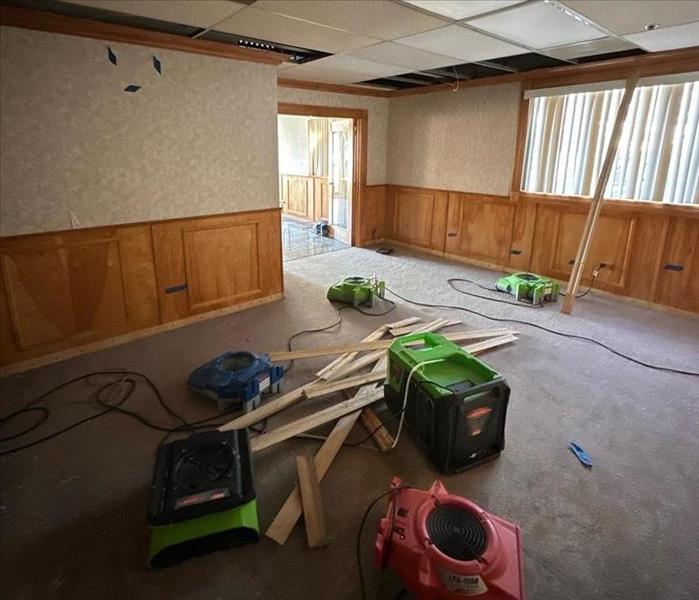 It's important to understand when it's appropriate to handle the job yourself and when it's time to call in the professionals.
It's important to understand when it's appropriate to handle the job yourself and when it's time to call in the professionals.
Discovering mold damage in your home can be alarming, but before you dive into a DIY mold removal project, it's important to understand when it's appropriate to handle the job yourself and when it's time to call in the professionals. In this article, we will explore the signs of mold damage, outline the steps involved in DIY mold removal, and discuss situations where professional assistance is necessary.
Signs of Mold Damage
Identifying the signs of mold damage is crucial in determining whether you should address the issue yourself or seek professional help. Look out for the following indicators:
- Visible Mold Growth: If you spot mold growth on surfaces such as walls, ceilings, or floors, it may suggest a more extensive problem. Large areas of mold growth often require professional attention.
- Musty Odor: A musty smell in specific areas of your home can indicate hidden mold growth. Investigate further to determine the source and extent of the issue.
- Water Damage: Any previous water damage, such as flooding, leaks, or high humidity, can promote mold growth. If there are signs of water damage, it's recommended to consult professionals for a comprehensive assessment.
Steps in DIY Mold Removal
If you decide to tackle minor mold damage yourself, it's important to follow the necessary steps to ensure your safety and effectiveness. Here's a general guide for DIY mold removal:
- Personal Protective Equipment (PPE): Before starting any mold removal process, don the appropriate PPE, including gloves, goggles, and a respirator to protect yourself from mold spores.
- Contain the Area: Use plastic sheeting and tape to create a barrier around the affected area. This will prevent the spread of mold spores to other parts of your home.
- Remove Mold-Impacted Materials: Carefully remove and dispose of any materials (such as drywall or carpet) that are heavily infested with mold. Double-bag and seal the materials to prevent contamination.
- Clean Surfaces: Use a mold-specific cleaner or a mixture of water and detergent to scrub the mold off hard surfaces. Thoroughly dry the area afterward to discourage further mold growth.
- Ensure Proper Ventilation: Open windows and use fans to improve airflow during and after the cleaning process. This will help dry out the area and minimize the risk of mold regrowth.
When to Call the Professionals
While DIY mold removal can be suitable for small-scale, easily accessible areas of mold, certain situations call for professional assistance. It's recommended to contact mold remediation professionals when:
- Extensive Mold Growth: If the mold covers an area greater than 10 square feet, it's best to have certified professionals handle the removal process. They have the expertise and equipment to safely address larger-scale mold problems.
- Hidden or Hard-to-Reach Mold: Mold growth in hidden spaces like behind walls or under flooring requires specialized techniques for proper detection and removal. Professionals have the necessary tools and knowledge to access these areas.
- Recurring Mold: If you have previously attempted DIY mold removal but the mold keeps coming back, it indicates a deeper issue that professionals can thoroughly assess and address.
DIY vs. Professional Mold Remediation
Knowing when to handle mold damage yourself and when to call in professionals is crucial for effective and safe remediation. While minor mold issues can be handled with DIY methods, extensive growth, hidden mold, or recurring problems necessitate the expertise of certified professionals. SERVPRO® technicians are trained in mold removal and remediation, available to address any size mold problem in your home. Contact us today to schedule a consultation and ensure a thorough and successful mold removal or remediation process.
5 Tips to Protect Your Home Against Water Damage
2/14/2024 (Permalink)
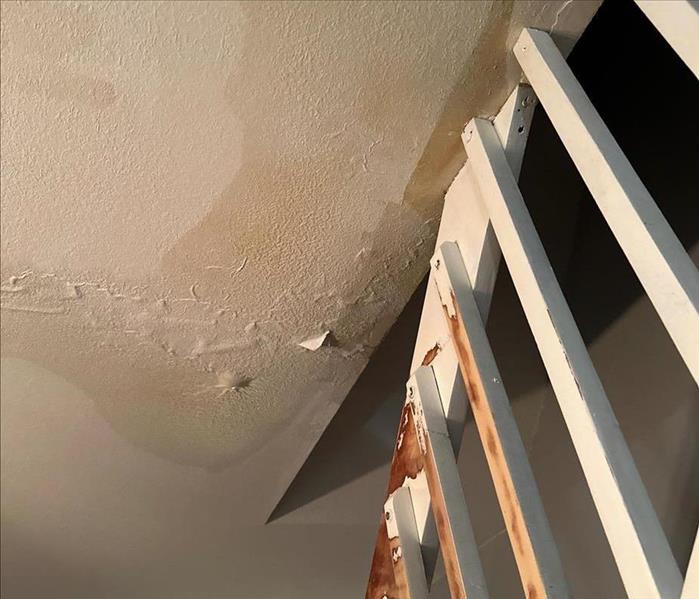 Implementing these DIY tips can significantly reduce the risk of water damage to your home.
Implementing these DIY tips can significantly reduce the risk of water damage to your home.
Water damage is a common yet often preventable issue that can wreak havoc on your home. Whether it's a leaky roof, burst pipes, or natural disasters, taking proactive measures can significantly reduce the risk of water damage. In this blog, we'll explore five practical do-it-yourself tips to protect your home from potential water-related disasters.
1. Regular Inspection and Maintenance of Plumbing
Regularly inspecting your plumbing system can help catch potential issues before they turn into major problems. Check for leaks, drips, or signs of corrosion in pipes, faucets, and fixtures. Replace worn-out hoses and ensure proper sealing to prevent water seepage.
2. Maintain Gutters and Downspouts
Clogged gutters and downspouts can lead to water overflow and seepage into your home's foundation or walls. Clean gutters regularly, especially during fall when leaves accumulate, to ensure proper water drainage away from your home. Consider installing gutter guards to prevent debris buildup.
3. Seal and Protect Windows and Doors
Check for gaps or cracks around windows and doors that could allow water infiltration during heavy rains or storms. Seal any openings with weather-stripping or caulking to prevent water from entering your home and causing damage.
4. Maintain Your Roof
Regularly inspect your roof for damaged or missing shingles, cracks, or areas prone to leaks. Repair any issues promptly to prevent water from seeping into your home during rain or snow. Consider professional inspection and maintenance annually, especially after severe weather events.
5. Monitor and Maintain Your Landscape
Properly grade your yard to ensure water flows away from your home's foundation. Avoid landscaping that encourages water pooling near the house. Install proper drainage systems, such as French drains, to divert water away from the property.
Implementing these DIY tips can significantly reduce the risk of water damage to your home. However, it's essential to stay vigilant and address any issues promptly to prevent potential water-related disasters. While these measures are effective, some situations may require professional expertise.
At SERVPRO of Commerce City, we understand the importance of proactive measures in preventing water damage. For a comprehensive assessment, restoration, and professional advice on protecting your home, contact us today!
Weathering the Storm Together: How to Create a Family Emergency Plan
1/13/2024 (Permalink)
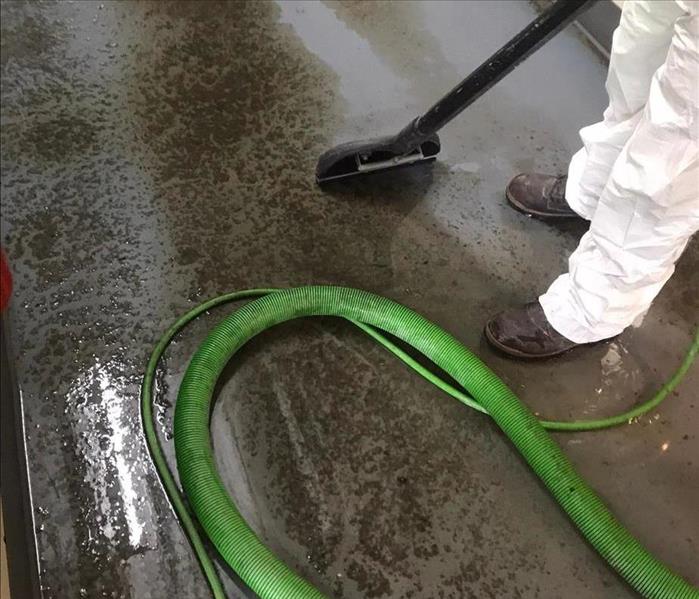 If your property faces storm-related damage, SERVPRO of Commerce City is here 24/7 to provide professional restoration services!
If your property faces storm-related damage, SERVPRO of Commerce City is here 24/7 to provide professional restoration services!
When it comes to storm scenarios, having a well-thought-out family emergency plan is key to ensuring everyone's safety. In this blog, we'll guide you through the essential steps of creating a comprehensive family emergency plan that addresses various storm scenarios.
Gather Important Information
Compile a list of emergency contacts, including local authorities, medical facilities, and relatives. Keep a copy in your emergency kit and ensure everyone in the family has access to this important information.
Create an Emergency Kit
Assemble an emergency kit containing essential supplies like non-perishable food, water, medications, first aid items, flashlights, batteries, and important documents. Customize the kit based on your family's specific needs.
Designate Safe Meeting Places
Identify safe meeting places both within your home and in your neighborhood. These locations can serve as rallying points in case family members get separated during a storm or evacuation.
Know Evacuation Routes
Familiarize yourself with local evacuation routes and shelters. Plan multiple routes to accommodate road closures or heavy traffic. Ensure every family member knows these routes and where to go in case of evacuation.
Account for Special Needs
Consider any special needs within your family, including medical conditions, mobility issues, or dietary restrictions. Tailor your emergency plan to accommodate these specific requirements and ensure everyone's well-being during a serious storm.
Practice Emergency Drills
Regularly conduct emergency drills with your family. Practice evacuation procedures, meeting at designated locations, and using emergency supplies. Familiarity with the plan enhances everyone's ability to respond calmly and efficiently during an actual emergency.
Creating a family emergency plan is a proactive step toward ensuring the safety and well-being of your loved ones during storm scenarios. And remember, if your property faces storm-related damage, SERVPRO of Commerce City is here 24/7 to provide professional restoration services!
Fire Damage Insurance Tips: What You Need to Know
12/13/2023 (Permalink)
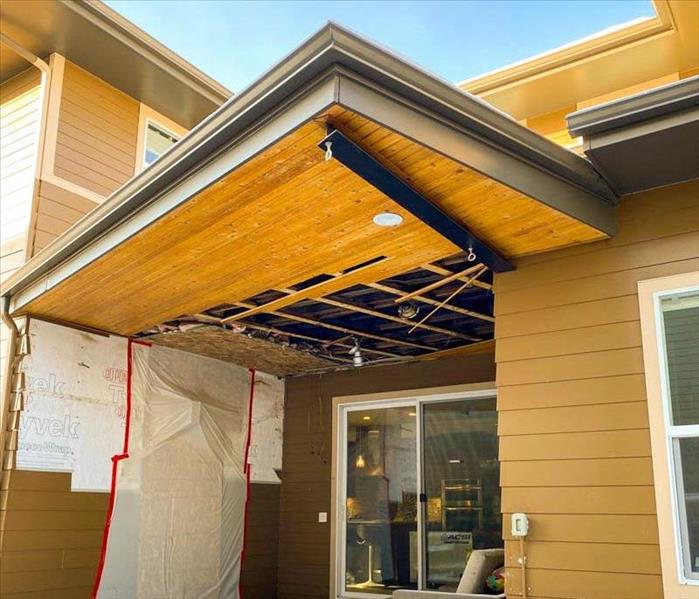 Dealing with fire damage can be a stressful and overwhelming experience.
Dealing with fire damage can be a stressful and overwhelming experience.
Dealing with fire damage can be a stressful and overwhelming experience. In such challenging times, having the right insurance coverage is crucial to help you recover and rebuild. In this blog, we will provide essential tips and information on fire damage insurance to ensure you're well-prepared in case of a fire-related emergency. We'll also help you understand the importance of professional restoration services like SERVPRO® in the claims process.
Review Your Insurance Policy
The first step to understanding your fire damage coverage is to thoroughly review your insurance policy. Familiarize yourself with the terms, limits, and exclusions. If you have questions or need clarification, don't hesitate to contact your insurance agent.
Document Your Belongings
Before disaster strikes, it's essential to document your belongings. Take photos or videos of your possessions and keep an inventory. This documentation can be invaluable when filing a claim with your insurance company.
Contact Your Insurance Company
In the event of a fire, contact your insurance company as soon as it's safe to do so. They will guide you through the claims process and may provide immediate assistance for emergency needs.
Temporary Living Expenses
Your insurance policy may cover temporary living expenses if your home becomes uninhabitable due to fire damage. Keep records of all such expenses, as they are typically reimbursable.
Professional Restoration Services
Consider hiring professional restoration services like SERVPRO® of Commerce City. Experienced restoration companies not only help with cleanup and repairs but also understand the insurance claims process, making it smoother and more efficient.
Obtain Multiple Estimates
Before starting repairs, obtain multiple estimates from reputable contractors. Share these estimates with your insurance company to ensure the cost of restoration is accurately assessed.
Keep Records
Throughout the claims process, keep thorough records of all communication with your insurance company, restoration professionals, and contractors. This documentation can be beneficial in case of disputes or discrepancies.
Understanding your fire damage insurance policy is paramount to a smoother recovery process. Review your coverage, document your belongings, and, in the unfortunate event of a fire, promptly contact your insurance company. Consider enlisting the help of professional restoration services like SERVPRO® for efficient cleanup and repairs. By following these tips and staying informed, you can navigate the challenging aftermath of a fire with greater confidence and security.
If you've experienced fire damage and need professional restoration services, don't hesitate to contact our SERVPRO® of Commerce City team for expert assistance. We're here to help you throughout the restoration and insurance claims process!
What's the Difference Between Mold Removal vs. Mold Remediation?
11/8/2023 (Permalink)
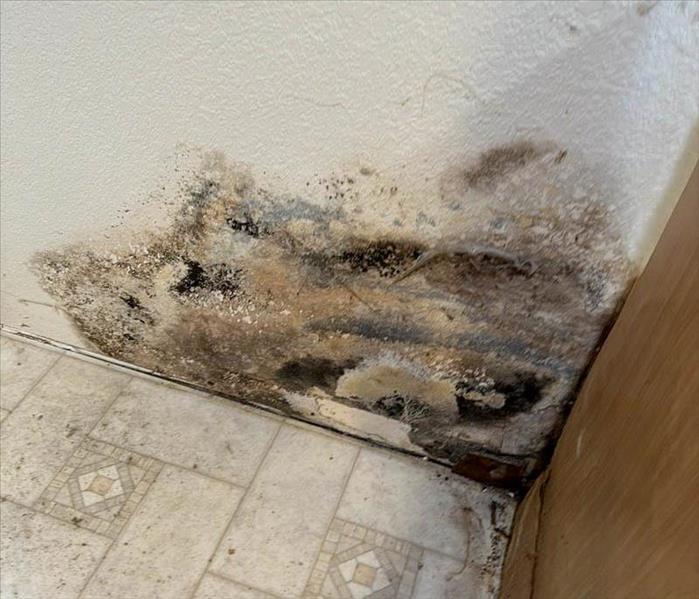 In Commerce City, CO, where humidity levels can vary, opting for mold remediation is often the best choice.
In Commerce City, CO, where humidity levels can vary, opting for mold remediation is often the best choice.
Mold issues can lead to a variety of problems in your Commerce City home or business. In this blog, we will clarify the differences between mold removal and mold remediation, helping you make informed decisions to protect your home.
Understanding the Basics
Mold is a common issue that can affect homes in Commerce City, CO, due to our climate and environmental factors. When facing a mold problem, it's crucial to understand the distinctions between mold removal and mold remediation.
Mold Removal
Mold removal often refers to the physical process of eliminating visible mold from surfaces. While it might seem like a straightforward solution, it's essential to note that it may not address the underlying issue causing mold growth.
Pros of Mold Removal
- Immediate removal of visible mold.
- May improve the appearance of affected areas.
Cons of Mold Removal
- Does not address the root cause of mold.
- Mold can return if the moisture source isn't addressed.
Mold Remediation
Mold remediation takes a more comprehensive approach. It not only involves removing visible mold but also addressing the underlying causes of mold growth, such as moisture issues and humidity control. This holistic approach helps prevent future mold problems.
Pros of Mold Remediation
- A comprehensive solution that addresses the root causes.
- Minimizes the risk of mold returning.
Cons of Mold Remediation
- May take longer to complete compared to simple removal.
Choosing the Right Approach
In Commerce City, CO, where humidity levels can vary, opting for mold remediation is often the best choice. It ensures that not only is the visible mold removed, but steps are also taken to prevent its return. Mold remediation professionals, like SERVPRO® of Commerce City, are equipped with the expertise and tools needed to carry out this comprehensive process effectively.
When dealing with a mold issue understanding the difference between mold removal and mold remediation is crucial. While removal may seem like a quick fix, remediation offers a more long-lasting solution by addressing the root causes of mold growth. For expert assistance and reliable mold remediation services, trust SERVPRO® of Commerce City. We are here to help you protect your property from mold-related challenges!
Colorado Water Damage: Restoring Indoor Air Quality Like a Pro
10/8/2023 (Permalink)
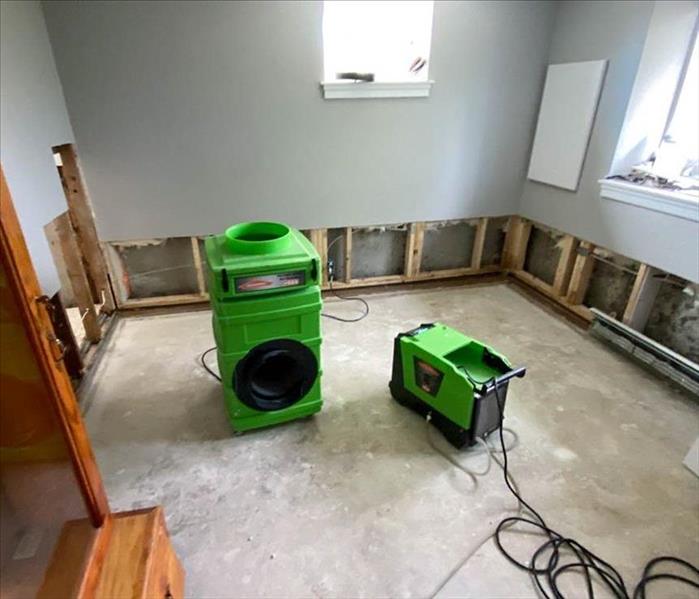 Clean air is a vital component of a healthy living environment.
Clean air is a vital component of a healthy living environment.
Here in Colorado, we are no stranger to heavy snowfalls, thunderstorms, and flooding, making water damage a significant concern for homeowners and businesses alike. In this blog, we'll guide you through the steps to ensure your indoor air quality remains safe and healthy post-water damage.
Understanding the Importance of Indoor Air Quality
Colorado residents understand that clean air is a vital component of a healthy living environment, especially in a state known for its pristine natural landscapes. After water damage occurs in your home or business, it's crucial to address not only visible damage but also the potential threats to indoor air quality. Stagnant water and moisture can lead to mold growth, which can release harmful contaminants.
Step 1: Ensure Safety First
Before diving into the restoration process, prioritize safety. Ensure the property is safe to enter and check for any electrical hazards or structural damage. Use proper protective gear, including masks, gloves, and eye protection, when dealing with water-damaged areas.
Step 2: Remove Standing Water and Moisture
The first step in restoring indoor air quality is to eliminate all sources of moisture. Use pumps, wet/dry vacuums, and dehumidifiers to remove standing water and excess moisture from affected areas. Speedy moisture removal is essential in preventing mold growth.
Step 3: Inspect and Remediate Mold
In Colorado's diverse climate, mold can grow quickly if left unchecked. Inspect your property for visible mold growth and address it promptly. SERVPRO professionals are well-equipped to handle mold remediation safely and effectively.
Step 4: Clean and Disinfect
Thoroughly clean and disinfect all surfaces and materials that came into contact with the water. This step is crucial in eliminating harmful bacteria and viruses, which can affect indoor air quality.
Step 5: Proper Ventilation
Colorado's dry climate can be an advantage in drying out your property. Open windows and doors to facilitate natural ventilation. Use fans, air purifiers, and other ventilation equipment to help circulate air and remove airborne contaminants.
Step 6: Regular Monitoring
Even after the initial cleanup, continue monitoring moisture levels and indoor air quality. Maintain good ventilation practices and keep an eye out for any signs of recurring water damage or mold growth.
Restoring indoor air quality after water damage in Colorado is essential for a healthy living environment. By following these steps and acting swiftly, you can ensure your indoor air remains clean and safe. If you're facing extensive water damage or mold issues, don't hesitate to contact SERVPRO of Commerce City. Our experienced team is dedicated to helping Coloradans restore their properties and indoor air quality to their pre-damage condition. Your safety and well-being are our top priorities in the beautiful Centennial State.
Cleaning Up Debris After Colorado Storms
9/16/2023 (Permalink)
Colorado's breathtaking landscapes are a wonder to behold, but the state's ever-changing weather can bring powerful storms that leave a trail of debris and fallen trees in their wake. As a responsible homeowner in the Colorado area, knowing how to effectively clean up after storms is essential to ensure the safety of your property and loved ones. In this comprehensive guide, we'll provide you with valuable insights and actionable tips on cleaning up debris and fallen trees after Colorado storms, helping you restore your home's beauty and security.
Assessing the Damage: Safety First
Before diving into the cleanup process, prioritize safety for yourself and others. Inspect your property carefully to identify potential hazards, such as downed power lines or unstable structures. If you encounter any life-threatening situations, evacuate the area immediately and contact the relevant authorities.
Dealing with Fallen Trees
Fallen trees can cause significant damage to structures, vehicles, and landscapes. Here's how to manage fallen trees safely and efficiently:
Secure the Area: Mark off the area around the fallen tree to prevent anyone from getting too close. If the tree has damaged power lines, stay at a safe distance and contact the utility company.
Assess the Damage: Determine the extent of the tree's impact on your property. If it has caused structural damage, consult a professional before attempting removal.
DIY vs. Professional Help: Small trees or branches can often be handled with DIY methods, but larger trees and complex removals require professional expertise. An arborist can assess the situation and safely remove the tree if necessary.
Clearing Debris
After a storm, your property may be littered with debris, such as branches, leaves, and other items. Proper debris removal is essential to prevent further damage and maintain your property's aesthetics:
Safety Gear: Wear appropriate protective gear, such as gloves, sturdy footwear, and eye protection, when handling debris.
Sorting and Disposal: Separate debris into different categories, such as organic material, recyclables, and non-recyclables. Compost or dispose of organic material properly, and recycle whenever possible.
Composting: Consider composting branches and leaves to create nutrient-rich soil for your garden. Avoid composting diseased or infested plant material.
Bulky Items: If you have large, bulky items like broken furniture, contact your local waste management service for guidance on proper disposal methods.
Yard Cleanup: Restoring Your Landscape
Your yard might require some extra attention to restore its beauty and functionality:
Pruning: Trim damaged branches and shrubs to encourage healthy growth and prevent further damage.
Plant Replacement: If any plants or trees were uprooted, replace them with native species that are well-suited to Colorado's climate.
Mulching: Apply mulch to your garden beds to retain moisture and control weed growth.
Lawn Care: Rake your lawn to remove debris and allow sunlight to reach the grass. Reseed or re-sod any damaged areas.
Preventing Future Damage
After cleaning up storm debris, take proactive measures to reduce the impact of future storms:
Regular Tree Maintenance: Trim and prune trees on a regular basis to reduce the risk of limbs breaking during storms.
Secure Outdoor Items: Anchor outdoor furniture, playsets, and other items that could become projectiles in strong winds.
Gutter Maintenance: Keep gutters and downspouts clear of debris to prevent water buildup and potential flooding.
Cleaning up debris and fallen trees after storms is a necessary task that ensures your property's safety, aesthetics, and functionality. By following the steps outlined in this guide, you'll be better equipped to handle post-storm cleanup and restoration. Remember that safety always comes first, and when in doubt, don't hesitate to seek professional assistance. With your diligence and proactive approach, you'll be well-prepared to weather any storm that comes your way.
How Fire Sprinklers Detect and Combat Fires
8/14/2023 (Permalink)
As a homeowner or property owner, ensuring the safety of your family, tenants, and assets is of utmost importance. Fire accidents can occur unexpectedly, and having an effective fire protection system in place is crucial to mitigate potential damage and save lives. Fire sprinkler systems are a vital component of fire safety, offering a quick and automatic response to combat fires before they escalate. In this blog, we will explore how fire sprinklers detect fires and the mechanisms they employ to combat flames swiftly and effectively.
1. Heat-Activated Sensing
Fire sprinkler systems operate on a heat-activated principle. Each individual sprinkler head is equipped with a heat-sensitive element, typically a glass bulb or metal link, containing a liquid or a substance that expands with heat. These elements are carefully calibrated to respond to specific temperature thresholds.
2. Responding to Localized Heat
Contrary to popular belief, fire sprinkler heads don't activate all at once when a fire breaks out. Instead, they are designed to respond to localized heat. When a fire occurs, the air temperature surrounding the fire rises rapidly, reaching the activation temperature of the heat-sensitive element in the nearest sprinkler head.
3. Individual Activation
Only the sprinkler head closest to the fire is activated due to the localized increase in heat. This targeted response ensures that water is directed precisely where it is needed, minimizing water wastage and maximizing the efficiency of the system.
4. Discharging Water Flow
Once the heat-sensitive element reaches its activation temperature, it triggers a mechanical response. In the case of a glass bulb, it shatters, while a metal link detaches. This action opens a valve, allowing water to flow through the activated sprinkler head.
5. Water Pressure and Spray Pattern
Fire sprinklers are designed to discharge water at a specific pressure and spray pattern. The pressure is optimized to effectively combat the fire while preventing excessive water damage to the surrounding area. The spray pattern is carefully engineered to cover the maximum surface area, extinguishing flames and reducing heat.
6. Controlling Fire Spread
By swiftly delivering water directly to the source of the fire, fire sprinklers play a critical role in controlling fire spread. Their rapid response can suppress or extinguish flames before they have a chance to grow and threaten lives and property.
7. Heat Absorption and Cooling Effect
In addition to quenching flames, fire sprinklers help cool down the surrounding environment, making it less conducive to the fire's spread. This cooling effect is particularly important in preventing re-ignition.
8. Buying Time for Evacuation
The quick response of fire sprinklers provides valuable time for occupants to evacuate safely. Early fire suppression can significantly reduce the intensity of the fire, giving occupants crucial minutes to exit the building and reach safety.
Fire sprinkler systems are a powerful and efficient line of defense against fire emergencies. Their heat-activated mechanism ensures a quick response, containing fires at their inception and preventing catastrophic damage. As a homeowner or property owner, investing in a well-maintained fire sprinkler system can give you peace of mind and, more importantly, protect the lives and well-being of your loved ones or tenants. Remember, regular maintenance and inspections of the sprinkler system are vital to ensuring its optimal performance and reliability in times of need.
Is a Basement Flood Usually Covered by Insurance?
7/18/2023 (Permalink)
A basement flood can be a stressful and costly experience for homeowners. One of the common questions that arise in such situations is whether insurance will cover the damages and restoration expenses. In this blog, we will delve into the topic of basement floods and insurance coverage, providing you with essential information to help you navigate the claims process and understand the factors that determine coverage.
Review Your Policy
The first step in determining if a basement flood is covered by insurance is to carefully review your homeowner's insurance policy. Look for specific provisions related to water damage, flooding, and basement coverage. Policies can vary, so it's crucial to understand the terms and conditions outlined in your policy.
Types of Insurance Coverage
There are two primary types of insurance coverage that come into play when it comes to basement floods:
1. Standard Homeowner's Insurance
Standard homeowner's insurance typically covers water damage resulting from sudden and accidental incidents, such as a burst pipe or a malfunctioning water heater. However, it may not cover flood-related damages caused by external factors, such as heavy rain or rising groundwater.
2. Flood Insurance
Flood insurance is a separate policy specifically designed to cover damages caused by floods. It is essential to note that flood insurance is distinct from standard homeowner's insurance and must be purchased separately. Flood insurance is typically offered through the National Flood Insurance Program (NFIP) or private insurers.
Factors That Influence Coverage
Cause of the Basement Flood
The cause of the basement flood plays a significant role in determining insurance coverage. If the flood is a result of a covered peril, such as a broken pipe, your homeowner's insurance policy may provide coverage. However, if the flood is caused by a natural disaster or a flood event, you would need separate flood insurance for coverage.
Policy Exclusions and Limitations
Insurance policies may have specific exclusions and limitations for basement floods. For example, some policies may exclude coverage for floods caused by sewer backups or water seepage through foundation cracks. Understanding these exclusions is crucial for managing expectations and exploring additional coverage options.
Location and Flood Zone
The location of your property and its classification within a designated flood zone can also impact coverage. Properties located in high-risk flood zones may require mandatory flood insurance. However, even if your property is not in a high-risk zone, it's important to assess the flood risk in your area and consider the benefits of purchasing flood insurance.
Navigating the Claims Process
Document the Damage
In the event of a basement flood, it is essential to document the damages thoroughly. Take photographs or videos of the affected areas and keep a detailed inventory of damaged items. This documentation will help support your insurance claim.
Contact Your Insurance Provider
Notify your insurance provider as soon as possible to report the basement flood. They will guide you through the claims process, provide necessary forms, and explain the coverage and deductible associated with your policy.
Work with Restoration Professionals
Engage the services of a reputable disaster restoration company experienced in handling basement flood cleanup and restoration. They can assess the damages, provide the necessary documentation for your insurance claim, and carry out the restoration process efficiently.
Determining whether a basement flood is covered by insurance can be complex, and coverage depends on various factors, including the cause of the flood, policy provisions, and location. It is crucial to carefully review your homeowner's insurance policy, consider purchasing flood insurance if necessary, and document the damages to support your claim. Consulting with your insurance provider and working with experienced restoration professionals will help you navigate the claims process and restore your basement effectively.
Mold Remediation: How to Address Mold Damage After a Flood
6/21/2023 (Permalink)
Mold is a common problem that can occur after a flooding disaster. It can cause damage to your property and create an unpleasant and musty odor. If left unaddressed, it can also lead to structural damage and decrease the value of your property. In this blog, we'll explore the steps you can take to address mold damage after a flooding disaster.
Identify the problem
The first step in addressing mold damage is to identify the extent of the problem. Mold can grow in hidden areas, such as behind walls and under flooring, so it's important to conduct a thorough inspection of your property. Look for visible signs of mold growth, such as discoloration and musty odors, and pay special attention to areas that were affected by the flooding.
Remove the mold
Once you've identified the extent of the mold damage, the next step is to remove the mold. This can be a challenging process, especially if the mold growth is extensive. In general, it's best to hire a professional mold remediation company to handle the removal process. They have the experience and equipment necessary to safely and effectively remove the mold from your property.
Prevent from future mold growth
During the mold removal process, it's important to take steps to prevent the mold from spreading. This can include sealing off the affected area and using negative air pressure to prevent mold spores from spreading to other areas of your property. In addition, it's important to wear protective gear, such as gloves and respirators, to prevent exposure to mold spores.
Underlying issue
After the mold has been removed, it's important to address the underlying cause of the mold growth. In many cases, this is related to moisture, so it's important to address any sources of moisture in your property. This can include repairing leaks and improving ventilation to promote air flow and reduce humidity levels.
Finally, it's important to take steps to prevent future mold growth. This can include regular inspections of your property to identify and address any signs of mold growth, as well as maintaining proper ventilation and humidity levels to prevent moisture buildup.
In conclusion, mold damage is a common problem that can occur after a flooding disaster. To address mold damage, it's important to identify the extent of the problem, remove the mold, address the underlying cause of the mold growth, and take steps to prevent future mold growth. If you're experiencing mold damage after a flooding disaster, it's best to consult with a professional mold remediation company to ensure that the problem is properly addressed and resolved.
 It's important to understand when it's appropriate to handle the job yourself and when it's time to call in the professionals.
It's important to understand when it's appropriate to handle the job yourself and when it's time to call in the professionals.





 24/7 Emergency Service
24/7 Emergency Service




